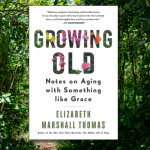How to Live Life Backwardly | Healthy Aging Series: Part 19
Several years ago, I worked with a young man who walked backwards. OK, he had some psychological problems and I guess if you think about it, what he did, kind of made sense. He didn’t want people sneaking up on him. He was a little paranoid, and a little cautious.
Your Marginal Decade
I was listening to one of my favorite podcasts (Huberman Lab) a few days ago. Dr. Andrew Huberman was interviewing Dr. Peter Attia. They were sharing a concept that I often share with my clients. I preach that you need to prepare for the last 10 years of your life. They referred to this period of your life as, your Marginal Decade. They also introduced a new concept that was developed by Annie Duke, author of “Thinking in Bets.” The concept was Backcasting, and it really doesn’t have anything to do with walking backward, and it is very different than the typical way we look at our lives.
Backcasting vs. Forecasting
I recently went to my doctor, and she ordered a vascular screening. They looked at my calcium levels around my heart, and at my carotid arteries, and my pulmonary artery. They looked at my bone density. Lots of stuff.
They took a snapshot of my current risk factors and then they forecasted whether I was at risk for a cardiovascular event. That’s what the medical community does. They gather information through various screenings, such as your weight, your blood work, and current behaviors, and then they use that data to predict or forecast what your future health conditions will be. I wrote a blog about a study that asked whether there were predictors for successful aging. That’s forecasting.
Backcasting is doing just the opposite. I tell my clients (often) that they must prepare for the last 10 years of their life. During the podcast is was referring to earlier, Dr. Attia, introduced a new term or a new way of looking at those last 10 years. He referred to them as the Marginal Decade. It is the last decade that you will live, and it is likely to be a tough one.
“ The gravity of aging,“ Dr Attia said, “is more vicious than we can imagine.”
I couldn’t agree more. That last decade has the potential of being very vicious to us. One of the strategies that has been suggested for preparing for that last decade is the process of Backcasting. Here is how it works: Think about what you want your marginal decade to look like (Fitness goals, psychological goals, social goals), and then begin developing strategies that will help you arrive at those goals. In other words, this is a creative way of preparing for the last 10 years of your life.
How I Backcasted My Life
This is a very personal experience and process. I believe, based on my parents average age of their death (85 years old), that I will be entering into my marginal decade in nine years. What do I want those last 10 years, from 75 to 85, to look like? First, I imagine that I want to be stable and able to come and go as I please. Second, I imagine that I want to be able to do the things that a person needs to do take care of himself to get around, and to get in and out of the community. Third, I imagine that want to be able to use my brain in my relationships, in my work, in my travels, and in my adventures. Fourth, I imagine that I want good solid relationships in my life. Fifth, I imagine that I want to continue writing. Sixth, I want to be able to study the things that I’m interested in. I want to go to the bottom of the well on topics that interest me! Seventh, I want to be able to hike mountains. I want to be able to cycle 15 or 20 miles on a Sunday afternoon. I want to be strong and be able to lift my own body weight in a dead lift. Backcasting doesn’t just mean physicality and emotional well-being, but it also involves your financial stability. Eighth, I imagine having the resources necessary to travel and have a comfortable life. These things are important to me.
What do you want your Marginal Decade to look like?
Once you get a snapshot of your marginal decade in your mind, it’s time to start mapping out the months, years, and decades leading up to that marginal decade. So, how do you act on a good Backcast of your marginal decade? I believe there are some meaningful and simple steps that you can take to do this. I’ve written blogs on resiliency, and these blogs address a lot of what I’m about to share.
When it comes to physical resiliency, you’re looking at nutrition, exercise, and sleep. Set goals for yourself physically. Currently my goal is to exercise 8 to 10 hours a week. It always involves some resistance training. Usually that involves lifting weights to stay strong. I also do a lot of cardio exercising which includes cycling, hiking, and backpacking. If I want to be strong during my marginal decade, then I’m going to have to continue being strong and the decade leading up to my marginal decade.
If you want a healthy brain, then I must exercise. I am writing blogs currently on the aging brain and one of the principles that I’ve learned is, what’s good for the heart is good for the brain. We all know what’s good for the heart. I’ve also talked about being stable as you get older to avoid falls. My prescription is to add instability into your work outs to be more stable. So, I’m working on continuing to be strong during the decades leading up to my marginal decade. When I was in my late 50s, I was using a personal trainer and he asked me what I wanted my goal to be for when I was 60. I told him, “ I want to be a bad ass when I’m 60!” Now it’s my goal as I approach seventy.
What about Backcasting for your psychological well-being?
How do you maintain your psychological resiliency during your marginal decade? There are many things that you can do now to ensure that when you’re in your marginal decade you have a healthy and strong psychological constitution. First, being psychologically and emotionally resilient means having friends, investing your time and energy into your family and social relationships. Second, it means studying. Study topics that interest you! Read difficult books. Learn difficult things. Third, work your brain out the same way you would work out your body. Push yourself psychologically. Fourth, force yourself to have social engagements with your family and friends! Look for new friendships!
These are the things that I am doing to prepare for my marginal decade. This isn’t brain surgery folks! Getting older and preparing for your marginal decade is not like falling off a log. And by that, I mean it isn’t going to happen accidentally. You must be purposeful in preparing for that marginal decade! I suppose that preparing for your marginal decade is in its simplest terms developing a lifestyle that will bring about positive changes and help sustain what you’ve been working on to date. Start working on that lifestyle now.
This is part nineteen in the Healthy Aging Series, written by Mark Neese, LCSW, BCBA. To see more entries in this series, click here.













